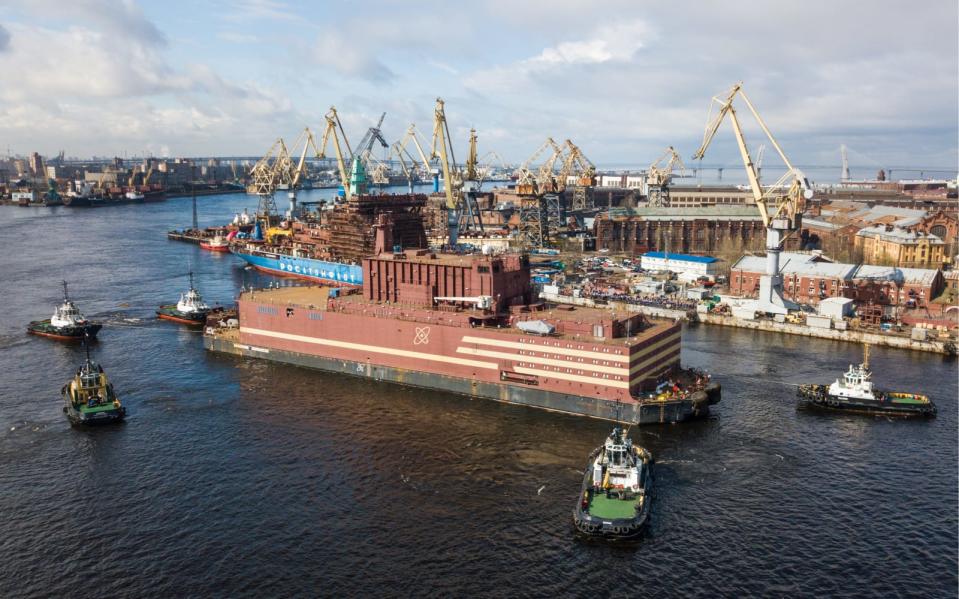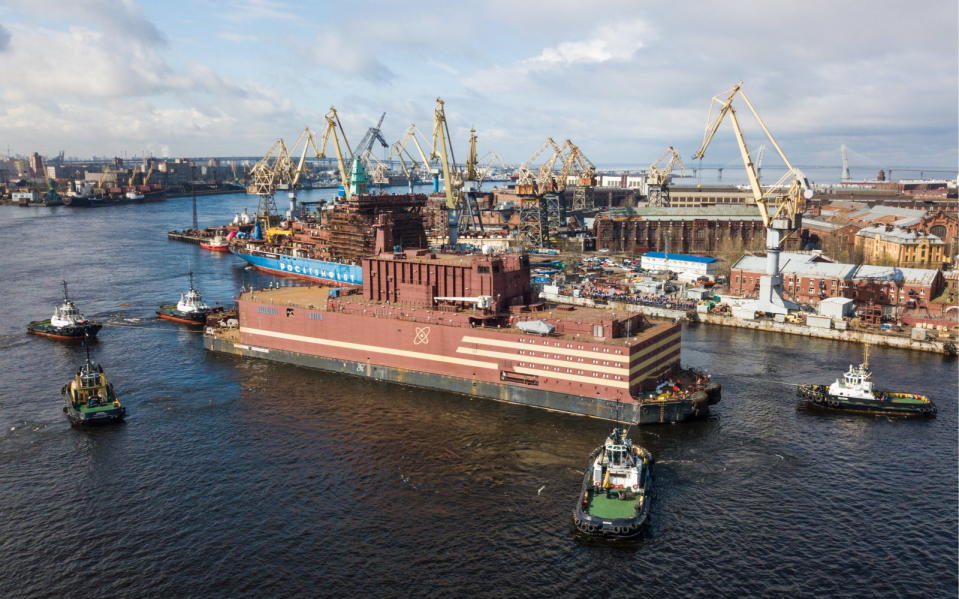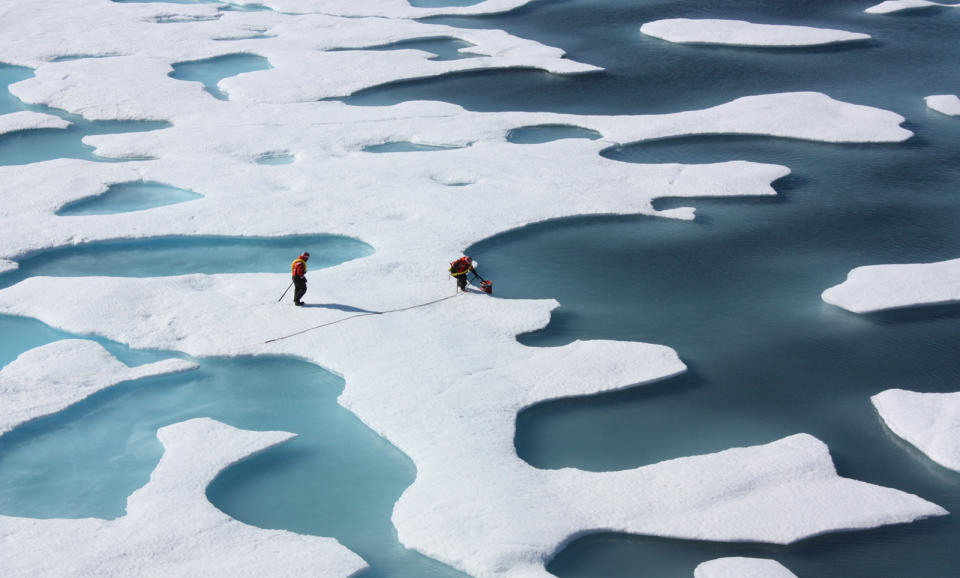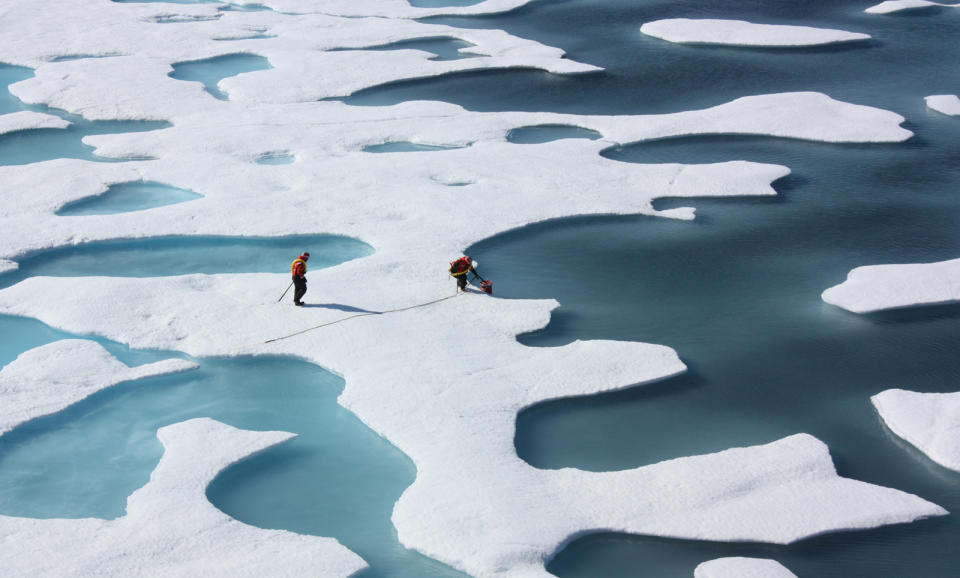Russia launches floating nuclear power plant on Baltic Sea (updated)
Twin reactors will power an oil industry town, desalination plant and drilling rigs.
Multiple nations, including China and the US, have pursued offshore or floating nuclear reactors, and now Russia will give it a go. Russia has launched a floating nuclear power plant or its own, the 70-megawatt Academik Lomonosov, on the Baltic Sea. Starting from St. Petersburg, it will be towed around Norway to a Russian town called Murmansk to take on nuclear fuel. From there, it will head to the Arctic to power the oil-industry town of Pevek, along with a desalination plant and drilling rigs.
Construction on the ship began way back in 2007, and it reportedly cost $232 million to build. The state-run company that owns it, Rosatom, originally planned to load the reactor with nuclear fuel at St. Petersburg, then send the ship directly to Pevek. But Greenpeace and several Baltic states mounted a successful petition, so the firm decided to load and test it in Murmansk, instead.
Greenpeace and other environmental groups still don't think this is a great idea, though, especially since the ship must be towed and can't move on its own power. "Moving the testing of this 'nuclear Titanic' away from the public eye will not make [the testing less irresponsible]," said Greenpeace nuclear expert Jan Haverkamp. "Nuclear reactors bobbing around the Arctic Ocean will pose a shockingly obvious threat to a fragile environment which is already under enormous pressure from climate change."
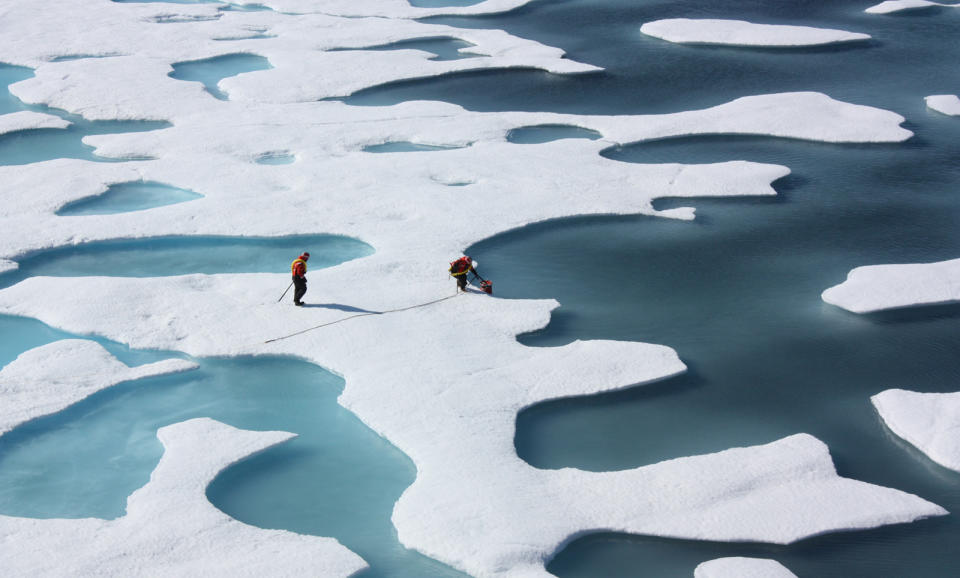
The nuclear ship will replace a 48-megawatt nuclear power plant in the Pevek region. It was likely easier to build the ship in St. Petersberg, then transport everything wholesale by sea, rather than build a new plant in such a remote place. "The pier, hydraulic engineering structures, and other buildings, crucial for the mooring of [the floating power plant] will be ready to use upon Akademik Lomonosov arrival," said Rosatom in a press release.
The ship, with twin nuclear reactors, has enough power for a city of about 100,000 people, according to Rosatom. Russia relies heavily on petroleum for its economy and like other nations, has staked claims to the oil-rich Arctic. Ironically, fossil fuel burning is primarily responsible for the global warming that's rapidly melting Arctic ice, which is opening up new shipping lanes from Russia -- and making further oil exploration possible.
Update 4/30/18 4:36PM ET: As Ars Technica points out, the Lomonosov isn't the first floating nuclear power plant. The US used one on the Sturgis in Panama from 1968 to 1975. This post has been updated to reflect this correction.
